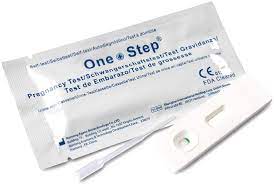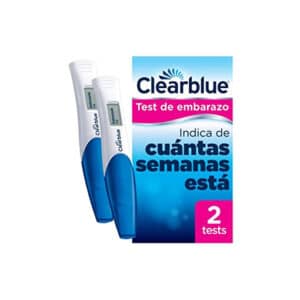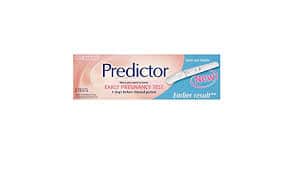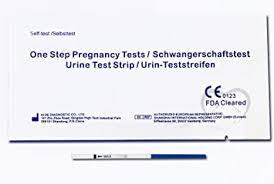The different types of pregnancy tests
If you have already been pregnant, you will know the nerves that are spent in those (very long) three minutes in which you wait for the result of the pregnancy test.
And if you still do not have the longed-for positive -courage-, you will also have already gone through this anguished wait before seeing the lines of the test, or the text on the digital pregnancy test.
Today we want to talk to you about the different types of pregnancy tests that exist on the market, so that you can decide which one best suits your needs.
If you missed our previous article, here you can get it back: We explain how pregnancy tests work, the sensitivity of the different types of home pregnancy tests and when to perform the test.
Typologies of home pregnancy tests
There are a wide variety of brands to choose from when it comes to pregnancy tests, but don't worry, you don't have to try them all. It is more interesting to know when and what type of test to use depending on the case.
Window test
It is the known Predictor, one of the longest running tests in history. It is also known as a thermometer or window test.
The operation of this test requires urinating on a kind of stick with a design reminiscent of modern thermometers. A few minutes later, the stick (which is actually a test strip) reveals the test result.
With Predictors, the result is usually shown with a plus or minus sign, or the famous lines (how many times have we looked and re-looked in case a kind of shadow appeared and it was the second line of the test). However, there are also window tests that give the result with the words "pregnant" or "not pregnant" on a strip or screen.
In most cases, tests also have a control indicator: a line or symbol that appears in the results window to verify that the test is working correctly. If the control line or symbol does not appear, it must be retested with a different test strip.
They are the most used for their simplicity, for being the cheapest and for having a high degree of reliability. Depending on the sensitivity of the test (the concentration of the HCG hormone that it is capable of detecting), some promise to give an early pregnancy result, even 3-5 or 7 days before the date on which the menstruation should arrive.
Although there are ultra-sensitive (You can check in this other article what are ultra-sensitive pregnancy tests), the normal thing is that they detect 25mlU / ml, so it is possible that you will find a false negative if you do it the first days of absence. It can also raise questions if the line is not clear.
Its use is recommended to confirm or rule out the suspicion of pregnancy, once there is a lack of rule. Especially if you are looking for pregnancy and you plan to use several tests per month due to its affordable cost.
Test by test strips
It is the most basic of all in terms of use. It consists of a strip that is reactive to the pregnancy hormone, and that you must place in a container where you will have previously deposited your pee and that is usually included. You also have to wait a few minutes to get the result. The downside is that they are less hygienic and the reading lines may not look as accurate when interpreting the result.
There are early detection ones, that is, high sensitivity to the hormone (detection of 10mlU / ml), which is why they have been recommended for in-vitro treatments. They are highly reliable even several days before the end of the cycle, perfect for you if you are impatient. They are very reliable, although the streak may sometimes not be clear enough.
Today there is little difference with the window tests.
In this case, if two lines appear, even if they are weak, the result is positive.
They are not the most widely used, but they are of interest to women who undergo numerous tests since they are quite inexpensive and come in packs of several units. They are also especially useful if you have irregular periods that can lead to false negatives.
They are not usually sold in pharmacies.
Example of this type of pregnancy test:
Cassette test
It's a little more of the same and perhaps a little more uncomfortable.
In this case, you have to urinate in a container, not always included in the package, collect a few drops of urine with a dropper, which is included, and drop them on the device. In this case it is a device similar to a cartridge or a cassette tape with a window in which to deposit the drops.
The result is also by means of lines. Two lines indicate that you are pregnant.
Example of this type of pregnancy test cassette:

Digital test
These devices are specially designed to minimize unclear results. The advantage is that they take the guesswork out of delivering a binary result precisely: yes or no.
It is the most sophisticated test. And it is the only one that, in addition to confirming pregnancy or not, indicates how many weeks pregnant. The test takes about 3 minutes, which can take forever, but has a high precision of 99%.
It could be similar to the window test but, instead of using a line language, it uses a digital screen where it indicates exactly whether or not there is a pregnancy, and if there is, it offers the approximate reference in weeks.
The main drawback is its high price, it is the most expensive on the market.
As a curiosity, the battery lasts less than a day so the test cannot be kept as a souvenir or take too long to show it to the couple before the screen stops working.
Example of this type of digital pregnancy test:

All types of pregnancy tests
Here we leave you a comparative table of all the types of pregnancy test that we have discussed so that you can find the best option to detect your positive.
Can pregnancy tests give wrong results?
Yes, pregnancy tests can return erroneous results, both false negatives (more common), and false positives (a little less common).
In this other article on pregnancy tests you have more information about the errors in the results.
If you have any questions about how to choose your pregnancy test, send us an email and we will help you.
It may interest you:



